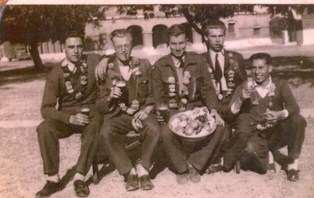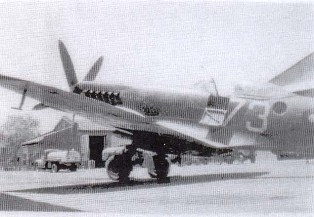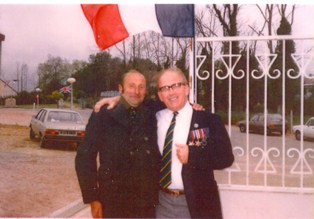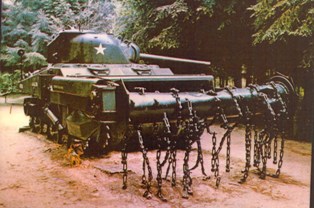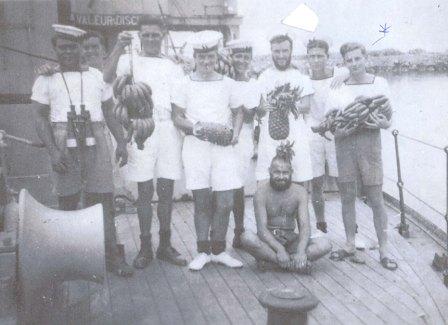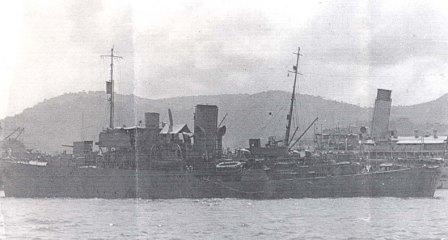
Private 43235 Leonard Scott
6th Northamptonshire Regiment
Killed in Action 3rd May 1917
Son of Mr. and Mrs. Samuel Scott, of Bourne End Farm, Boxmoor, Herts.
Arras Memorial, Bay 7.
Born: King's Langley.
Enlisted: Watford.
Leonard Scott's name on the Arras Memorial
(Photo: Richard Grayson, 3rd April 2014.)
A Private in the 6th Northamptonshire regiment, Leonard Scott, formerly of the Bedfordshire regiment, was killed in action at the age of 23 on the 3rd May 1917. He was the son of Mr. and Mrs. Samuel Scott; although he grew up on Bourne End Farm in Boxmoor, he enlisted in Watford. His name appears on the Arras and Kings Langley Memorials.
From 9th April to 16th May 1917 the British fought the German Army in the Battle of Arras, which achieved the longest advance since trench warfare had begun. For months before, the British and German Armies had been involved in regular fighting, leading up to larger and more successful battles. Leonard Scott is most likely to have been killed in the Third Battle of the Scarpe which took place on the 3rd and 4th of May 1917, where British attacks on German positions were unsuccessful. The British had, by the end of April, secured the area around Arleux,18.1 miles from Arras, and were trying to reach the Wotanstellung, which was a major German defensive area. The idea behind the attack was that two battles would occur simultaneously - one from British troops near Arras and one from Australian at Bullecourt - to try and split the German Army and weaken their defences. As shown by the war diaries, this battle was not successful at achieving its aims, but it is believed that the British Army learnt a lot about how all parts of the army - from tanks and artillery to men -needed to work together to be successful, which they would then apply to later battles.
On the 3rd of May 1917, the 6th Northamptonshire’s left Neuville Vitasse (four miles South-East of Arras) at 12:30am by companies- they marched within five minute intervals of each other. All companies had moved into their new positions by 1:45am. 3:45am was agreed as zero hour. The Battalion had been ordered to attack and occupy the Fontaine Trench as well as the circular trench to the rear of it. The infantry was informed that artillery bombardment would start at 5:30pm and continue until 6:00pm, then pause for 15 minutes, followed by the rolling/creeping barrage, 200 yards in front of the British Trenches. However, this plan was postponed for an hour.
The Battalion was in battle position by 5:30pm (in the front trench) with the Leicestershire Regiment on the right and the 7th Queens on the left. They had been told to attack simultaneously after the bombardment ended. As soon as the Barrage opened, the Battalion attacked with two Companies, B and C and two additional platoons in the front line, as well as two platoons in the 2nd line. They did this in three waves. A and D companies were going to support them. B and C companies advanced forwards, and, due to the unexpected proximity of the barrage, there were large number of casualties – which could potentially include Leonard Scott. However, there was also hostile enemy machine gun fire as soon as they reached the crest, which meant that many men hit the ground; yet, due to the dust caused by the bombardment, some companies could get through without being seen by the German army. The machine gun fire swept the area, resulting in 50% of B’s men becoming casualties. This took place by the time they had reached within 50 yards of the enemy wire: they had, by then, covered 900 yards of land.
When B and C company reached the wire, they found it still intact as the bombardment had failed to damage it at all. They came under heavy machine gun fire from their right flank and from in front of them, which made it impossible to advance any further. However, the left company had seen that their way was clear and they used bombs and rile grenades to enable the company to get down into Cable trench, as going over the top of the trenches was impossible, due to the machine gun fire.
This allowed them to join Fontaine Trench, which they also bombed down. They were successfully in the trench, under cover, ten minutes after the barrage had opened. They were able to work their way along 70 yards after severe bombing, grenades and the stokes gun had killed the majority of the enemy and taken out their machine guns in the earlier bombardment.
The left company were also able to see the right company advancing from where they were positioned. The right company used shell-holes for cover, but unfortunately, they could only get as close as 30 yards due to machine gun fire.
Some of the left company realised that the right could advance no further and that there were gaps in the line as well as part of the left company being out of contact with their commanding officer. They were ordered back to the original front lines through the Cable trench. Records state that no blame was placed on the Commanders for making this decision. The right company was also ordered to withdraw to the original front line, with the object of enabling the wounded men who had been lying out since the morning to get back to the trenches. Records show that there was a group of 50 soldiers from the Bedfordshire regiment who had dug themselves into shell holes, south of the Northamptonshire’s. Once back at the original trenches, the men were reorganised and more defences were put up.
The number of casualties of the day were recorded as 120 although other reports suggest closer to 110.This included 6 officers and Leonard Scott. It was stated that it was a particularly unsuccessful battle due the heavy machine gun fire that the battalions came under, but due to mostly good communication, they were able to keep the companies together and get them back to their trenches.
Sources:
-
6th Northamptonshire Regiment War Diary, Catalogue Reference: WO 95/2044
-
http://www.dacorumheritage.org.uk/first-world-war-database/kings-langley-soldiers-details/
-
https://drive.google.com/file/d/0B1B57_VTQrA5ZHA5QjhGX3dSQXc/view?ts=595243ca
-
http://www.wartimememoriesproject.com/greatwar/allied/battalion.php?pid=6831
-
http://www.wartimememoriesproject.com/greatwar/view.php?uid=1205991
-
http://www.hertfordshire-genealogy.co.uk/documents/Hemel%20Hempstead%20Roll%20of%20Honour.pdf
-
http://www.dacorumheritage.org.uk/first-world-war-database/hemel-hempstead-soldiers-details/hemel
-
https://drive.google.com/file/d/0B1B57_VTQrA5ZHA5QjhGX3dSQXc/view?ts=595243ca – war diaries
By Eleanor Clark.
27th June 2017
